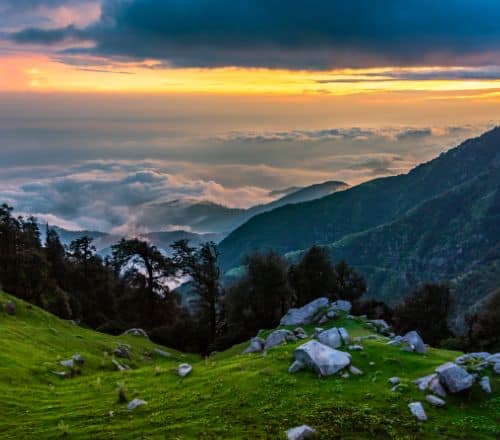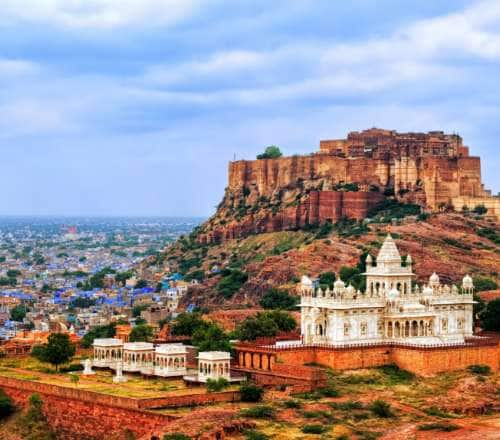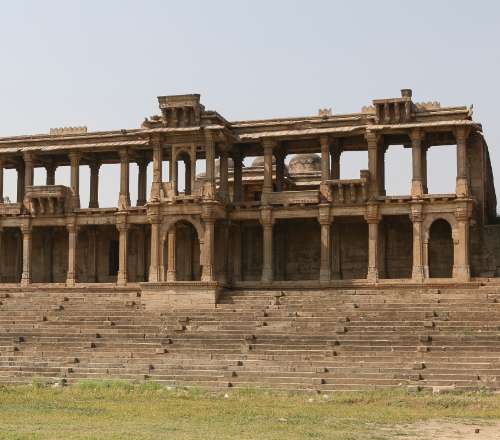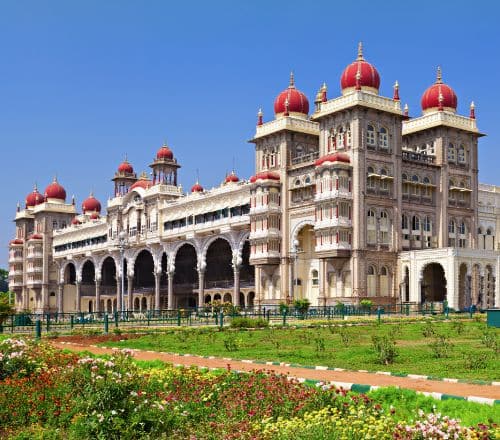Stay logged in to proceed with bookings, orders and offers.
On changing the terminal, you will loose items in your cart. Are you sure you want to change your terminal?
A quaint and ethereal town in Himachal Pradesh
Do you think you have seen every place in India? Think again. You'd be surprised to learn about the many untouched gems in the country; all you need is a slight detour from your usual travelling route. Rewalsar is one such place in Himachal Pradesh's Mandi district. It is a quaint settlement by a lake of the same name and surrounded by the majestic Himalayan ranges. Rewalsar has been staying rent-free in my mind ever since my friend, a frequent traveller, mentioned the hill station in passing. So, while on a trip to Manali, I made an impromptu stopover at Rewalsar, 24 km or an hour away by road from Mandi.
Read More
Read Less
It was when I reached Rewalsar I realised that this town, also known as Tso Pema or Tri Sangam, is an important pilgrimage for practitioners of Hinduism and Buddhism. A massive lake was central to Rewalsar's spirituality and the town's legends and folklore.
There were many fascinating stories surrounding the lake. According to Tibetan Buddhism, King Arashadhar of Mandi burnt alive Padmasambhava, a Buddhist priest, when the king found his daughter, Princess Mandarava, learning dharma from the Buddhist guru. The fire continued for a week only to turn into a lake with a lotus from which Padmasambhava, also known as Guru Rinpoche, appeared as a 16-year-old boy with Mandarava in his arms. It is believed that from Tso Pema, Guru Rinpoche and Mandarava went to Nepal and Tibet to spread Vajrayana Buddhism.
Per another mythology, Lord Shiva and Goddess Parvati blessed a sage named Lomas, meditating on the bank of the lake, giving the lake the name Hridayeshwar in Hindu literature.
Rewalser holds a lot of importance for Sikhs as well. In 1738, Guru Gobind Singh stayed here for a month, looking for support from the kings to fight against the tyranny of the Mughal emperor Aurangzeb. In 1930, the king of Mandi built a Gurudwara at Rewalsar to mark the memory of the Guru's visit.
Rewalsar is not a conventional destination for tourists because one cannot plan the journey and the accommodation in advance. You cannot book bus tickets online, and there are no hotels in the town either. Don't worry; there are many homestays and monastery guest houses at Rewalsar. Also, the frequency of local buses from Mandi to Rewalsar is high.
When in Rewalsar, simply do what the monks do. Eat fresh and stay content with the basic amenities of life. Rooms at the monasteries may not be luxurious but offered clean and hygienic beds, bathrooms, blankets, and towels. After all, isn't that all we need?
I was lucky to have planned many free days for my trip to Rewalsar. I was able to visit places a casual tourist would have missed.
Also known as Wogmin Thubten Shedrup Ling, I was awestruck by the beauty of Drikung monastery, right from the entrance gate of Rewalsar. Drikung's enormous bright red doors and colourful walls depicting Buddhist concepts of life were two of the monastery's most stunning features.
And, yes, you can live here as well! Overlooking the lake, Drikung has several rooms with single and double beds costing between INR 150-750 per night. My friend had suggested staying over at the monastery, unfortunately, I couldn't stay. My visit coincided with the festival of Losar, the Tibetan New Year, when Rewalsar was flooded with monks from across the world. While I could not get a room in Drikung, I was lucky to witness Rewalsar in a festive mood.
Drikung Monastery has a small eating place called Emaho Cafe, perched on the terrace of the monastery with amazing views of the Rewalsar lake and the surrounding mountain range. Enjoying delicious momos while watching the locals go about their day was a great way to spend time in Rewalsar.
During my three days in Rewalsar, I had four meals at a restaurant in the Nyingmapa Monastery. The speciality of the cafe is that they serve fresh organic food cooked from scratch. When you visit Nyingmapa, do not miss the opportunity to gorge on delicious thukpas. It will be the most heartwarming meal you'll have ever eaten. This lakeside monastery also provided affordable accommodation for INR 150-500 a night. By the looks of it, Nyingmapa seemed to be a favourite among monks who had most of the seats in the monastery's cafe.
In 2012, the 14th Dalai Lama installed a 12-m high statue of Padmasambhava atop a monastery called Mahatma Buddha Temple in Rewalsar. Atop the lotus base of the statue, a viewing deck offered a breathtaking panoramic view of the whole town of Rewalsar. I spent time at a cafe in the monastery, basking in the pretty views and peaceful vibes of the place.
The locals of Rewalsar take kora seriously. For those who are unaware, kora means circumambulation or walking in a circle in Tibetan. It was interesting to watch locals doing the kora around the lake as a daily ritual. Monks, especially, circumambulate the lake with a rosary while chanting 'Om Mani Padme Hum.'
On one side of the lake is a small Padmasambhava temple and a picture of the Dalai Lama followed by a number of prayer wheels. These wheels are often rotated to create a pleasant sound and weave harmony.
Around the lake and across the whole town of Rewalsar, long and interlinked sequences of prayer flags danced to the rhythm of the wind. The five colours of the flag represent the nature of life and are constant reminders of the spiritual connection between the body, mind, and soul.
My connection to Rewalsar was spontaneous and profound. Something about the place, the mountains, the lake, the monasteries, and the never-ending line of flags struck a chord with me. I found a place somewhere between walking on the path circling the lake, watching the countless prayer flags fluttering in the sky, and communicating with the hardworking and friendly locals.
You don't need to be religious to experience the serenity and beauty of Rewalsar; you only need willingness, a bus ticket, and a traveller's soul.





The Adani One expressly disclaims all liability, direct and indirect, in respect to actions taken or not taken based on any or all the contents of this Blog. The Blog is an opinion of the contributor based on the collation of data from various sources and is provided only for information purpose. Adani One does not canvass, advertise, solicit, invite or induct for any product, merchandise, information, brand or any other materials mentioned in the Blog, nor does it obtain any monetary benefit from the same. Reader is advised to read and apply his/her intellect and discretion in this regard. Any Intellectual Property mentioned in this blog belongs to the rightful owner. We do not intent to claim any interest over the same.